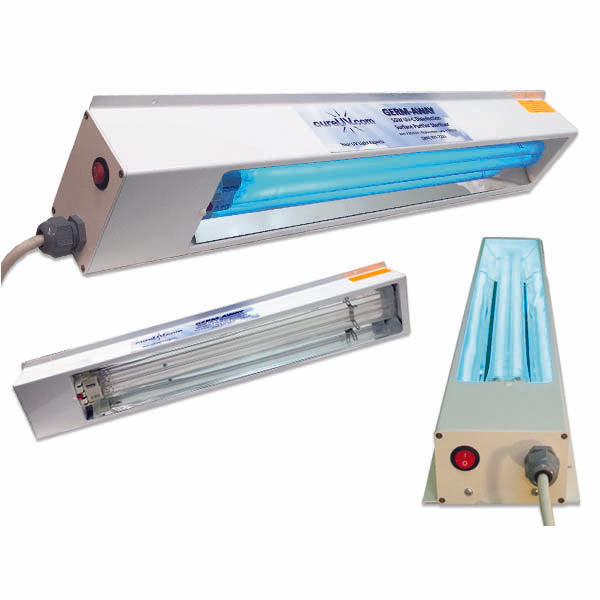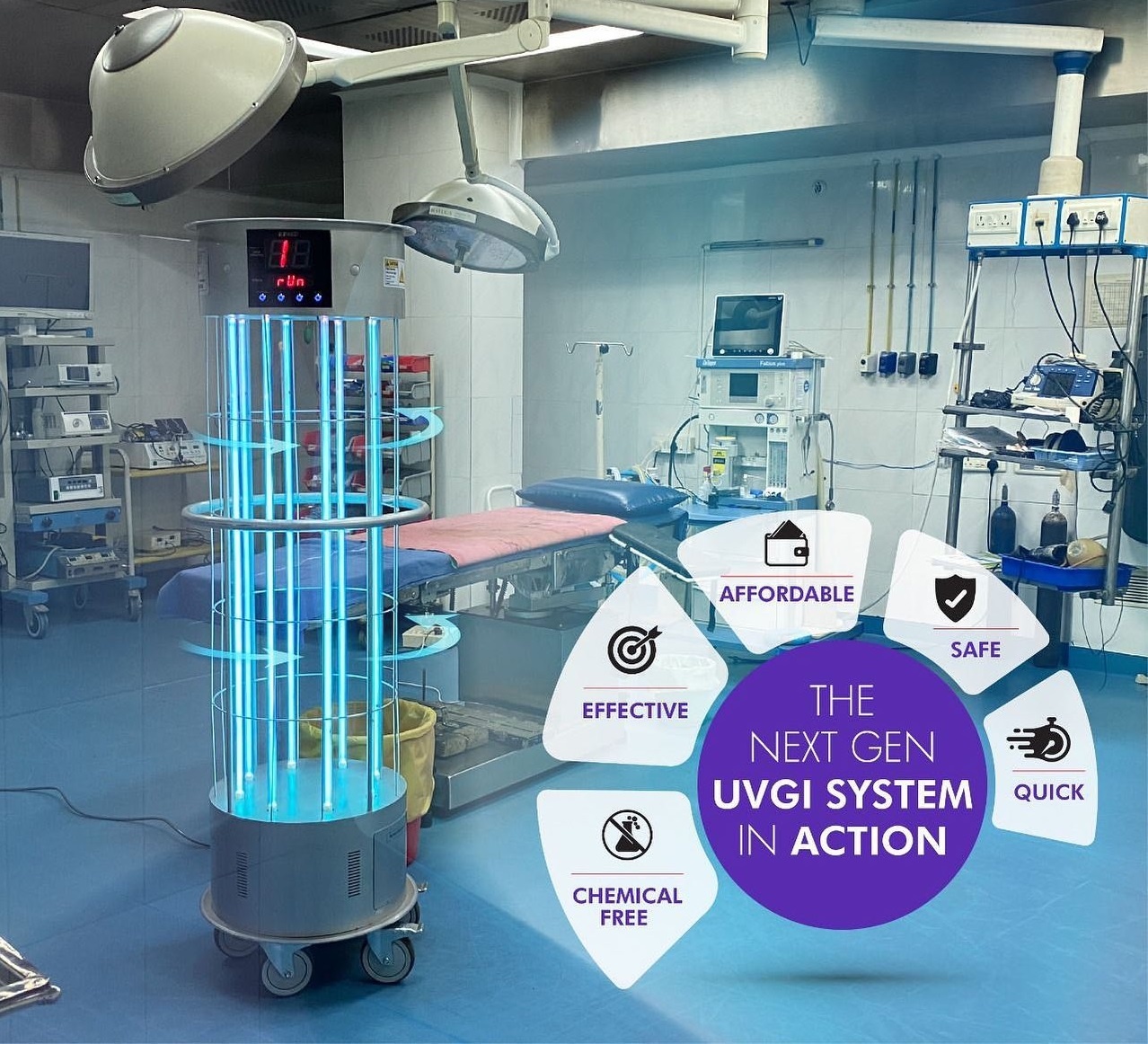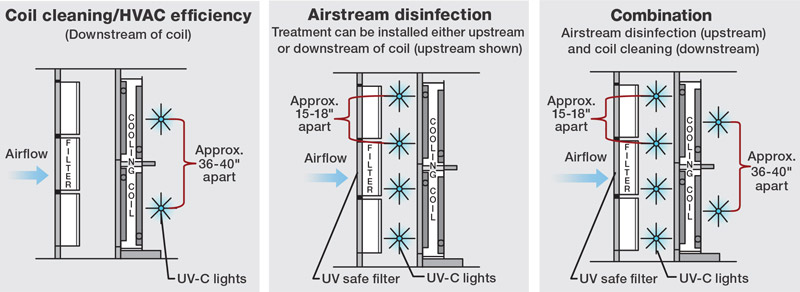UV Sanitation: The Cutting-Edge Technology Transforming Sanitation Practices
In the world of sanitation practices, one modern technology has actually emerged as a game-changer: UV sanitation. From medical care settings to food handling, UV disinfection is making its mark in numerous sectors.
Just How UV Disinfection Functions
UV disinfection works by making use of ultraviolet light to ruin or suspend bacteria, supplying a chemical-free and highly efficient method of hygiene. This innovation harnesses the power of short-wavelength UV-C light, which can damaging the DNA and RNA of microbes, therefore providing them unable to reproduce and create damage.
The process starts with the installation of UV sanitation systems, which are composed of UV lamps that release UV-C light. These lamps are tactically put in areas where microbial contamination is a worry, such as water therapy plants, healthcare facilities, research laboratories, and food processing facilities.
When bacteria are exposed to UV-C light, the photons penetrate their cell wall surfaces and get to the DNA and RNA within. The high-energy UV-C photons interrupt the hereditary material by creating bonds between adjacent nucleotides, causing the development of thymine dimers. These dimers prevent the microbes from replicating, rendering them harmless.
UV sanitation is very effective against a variety of bacteria, including infections, microorganisms, and bloodsuckers. It is specifically reliable versus waterborne virus like E. coli, Giardia, and Cryptosporidium. UV disinfection is a chemical-free technique, getting rid of the requirement for potentially damaging disinfectants and decreasing the risk of harmful sanitation by-products.
Advantages of UV Sanitation
UV sanitation supplies numerous advantages in the field of sanitation, making it an extremely chosen method for effectively eliminating dangerous bacteria. One of the key advantages of UV disinfection is its ability to give a chemical-free remedy. Unlike typical sanitation techniques that count on chemicals, UV disinfection uses ultraviolet light to damage the DNA of microbes, making them not able to replicate and trigger infections. This not only removes the demand for possibly unsafe chemicals yet additionally minimizes the risk of chemical deposit on surface areas.

UV sanitation is additionally highly flexible in its applications. It can be utilized in different settings, including medical facilities, schools, food handling centers, and water treatment plants. UV disinfection systems can be easily incorporated right into existing sanitation practices, offering an additional layer of protection versus contagious illness.
Along with its performance and flexibility, UV disinfection is also environmentally friendly. It does not produce any hazardous byproducts or deposits, making it a risk-free and sustainable method for sanitation - uv surface disinfection. Furthermore, UV sanitation needs minimal upkeep and has a lengthy lifespan, causing cost financial savings in the lengthy run.
UV Disinfection in Healthcare Settings
In medical care settings, UV sanitation has actually arised as a cutting-edge method for effectively getting rid of hazardous bacteria. The use of UV light to sanitize surfaces and devices has actually obtained popularity due to its capacity to supply an extra layer of protection versus virus. UV sanitation functions by giving off ultraviolet light at a certain wavelength that is deadly to microorganisms, viruses, and other microorganisms. This innovation uses several advantages in healthcare settings.
To start with, UV sanitation is a non-chemical technique, making it an eco-friendly option compared to conventional disinfection approaches that frequently entail using rough chemicals. The use of UV light gets rid of the demand for chemical disinfectants, minimizing the danger of harmful deposit or chemical direct exposure to both individuals and healthcare employees.
Additionally, UV disinfection is very effective in killing a wide variety of microbes, including drug-resistant microorganisms such as MRSA and C. difficile. It supplies a trusted and consistent sanitation procedure, making certain that all surfaces and devices are thoroughly decontaminated, even in hard-to-reach areas.

UV Disinfection in Food Handling
The application of UV browse around this web-site disinfection prolongs past health care setups and finds considerable worth in the realm of food handling. uv surface disinfection. UV sanitation innovation is coming to be increasingly popular in the food industry due to its capability to properly remove hazardous pathogens and boost food safety and security
One of the major benefits of UV disinfection in food handling is its capacity to target a wide variety of microorganisms, consisting of mold and mildews, infections, and bacteria. By utilizing UV light at certain wavelengths, it is possible to disrupt the DNA and RNA of these pathogens, providing them not able to cause or recreate harm. This innovation can be used to different stages of the food processing chain, including surface sanitation, equipment sanitation, and water therapy.
UV sanitation provides a chemical-free and non-thermal method of sterilizing food. Unlike conventional sanitation techniques that count on chemicals or warmth, UV technology does not leave any kind of residue or change the taste, structure, or nutritional value of the food. This makes it an ideal option for industries that call for stringent adherence to high quality requirements.
Furthermore, UV disinfection systems are easy to set up and operate, needing very little maintenance. They can be integrated right into existing processing lines without creating substantial interruptions to the production process. In addition, UV systems have a fast treatment time, permitting continual handling and decreasing downtime.
The Future of UV Disinfection

One area where UV sanitation is expected moved here to make considerable developments remains in the field of medical care. With the rise of antibiotic-resistant germs and the demand for more efficient sanitation methods, UV light has the prospective to play an essential duty in minimizing healthcare-associated infections. UV disinfection systems can be used to sanitize surfaces, devices, and even the air in healthcare facilities, aiding to prevent the spread of unsafe microorganisms and enhance patient safety and security.
An additional sector that could profit from innovations in UV disinfection innovation is the food market. UV light has actually already verified to be an efficient approach for decontaminating food and reducing the danger of foodborne ailments. As technology enhances, we can anticipate to see a lot more economical view publisher site and efficient UV disinfection systems being applied in food processing plants, guaranteeing that the food we take in is safe and without hazardous germs.
Verdict
In conclusion, UV sanitation is an advanced innovation that is transforming hygiene techniques in medical care settings and food handling. By using UV light to kill or shut down microorganisms, it offers many benefits such as performance, effectiveness, and safety. With ongoing improvements in this field, UV disinfection holds excellent prospective for the future of hygiene, offering a lasting and trustworthy service for keeping tidy and hygienic settings.
UV disinfection is a chemical-free approach, eliminating the requirement for potentially damaging disinfectants and lowering the threat of damaging disinfection byproducts.
Unlike conventional disinfection techniques that rely on chemicals, UV sanitation utilizes ultraviolet light to ruin the DNA of microbes, rendering them incapable to reproduce and trigger infections. Unlike traditional disinfection approaches that rely on chemicals or heat, UV technology does not leave any kind of deposit or change the preference, texture, or nutritional value of the food. As innovation boosts, we can anticipate to see much more reliable and affordable UV sanitation systems being implemented in food processing plants, making sure that the food we take in is risk-free and totally free from harmful bacteria.
In conclusion, UV disinfection is an advanced innovation that is transforming sanitation practices in healthcare setups and food processing.